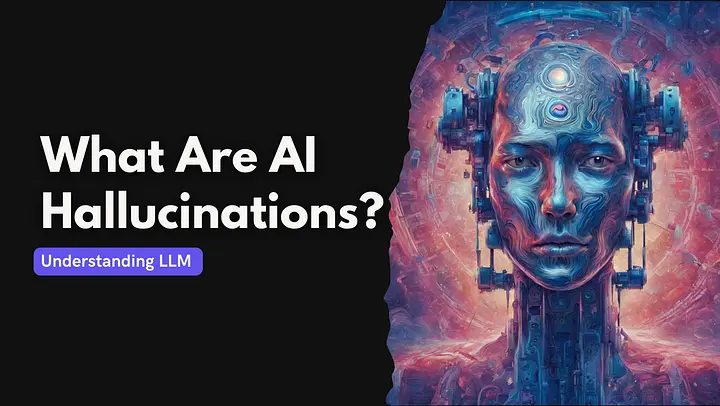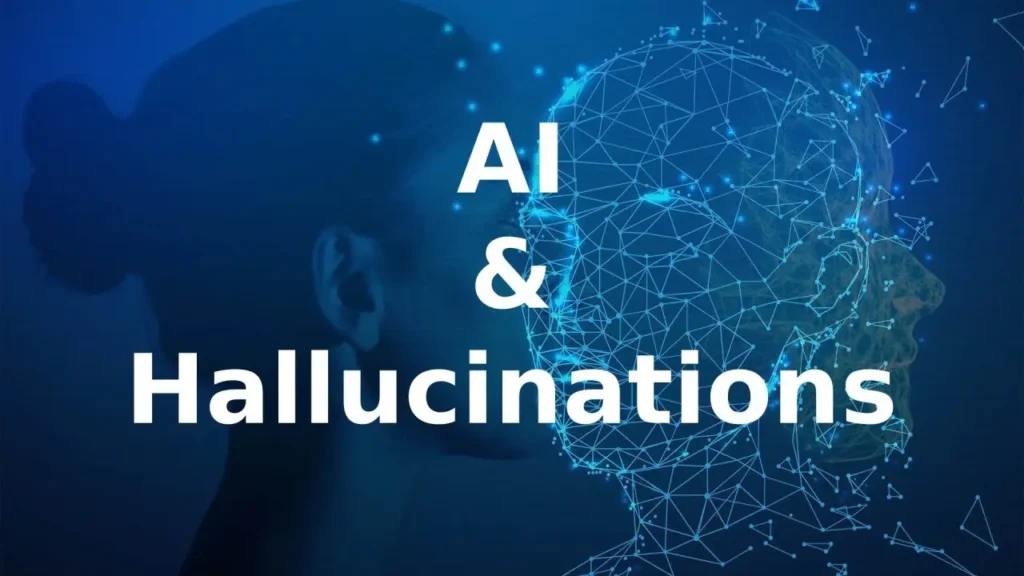What is AI Hallucination?

What Is AI Hallucination?
AI hallucination refers to the phenomenon where artificial intelligence models—especially large language models (LLMs) and generative AI systems—produce outputs that are plausible in form but contain false, fabricated, or misleading information. These “hallucinations” can range from the invention of fictitious facts and citations to erroneous interpretations of user queries. While such outputs may appear coherent and convincing, they deviate from verifiable reality, posing serious challenges for any application that relies on AI-generated content. Understanding AI hallucination is essential in an era where these systems are increasingly integrated into critical fields such as healthcare, law, finance, and journalism, where accuracy is paramount .
How Do We Recognize a Hallucination?
AI Hallucination manifest in several ways:
- Fabricated Facts: The AI may generate credible-sounding historical events, legal precedents, or medical studies that simply do not exist.
- Incorrect Numeric Data: Quantitative errors, like wrong statistics or dates.
- Misattributed Quotes: Attribution of statements to the wrong individuals or institutions.
- Erroneous Reasoning: Logical leaps unsupported by evidence or context.
By comparing outputs against trusted data sources—through fact‐checking libraries or human experts—users can detect instances of hallucination, but this process is resource‐intensive .
Why Do AI Models Hallucinate?
What Drives AI Hallucination at a Technical Level?
At their core, most LLMs are prediction engines trained to forecast the next token in a sequence of text based on patterns learned from massive datasets. This probabilistic mechanism, combined with the following factors, gives rise to hallucinations:
- Training Data Limitations: Large datasets inevitably contain biases, outdated information, and noise. When an AI model generalizes from this imperfect data, it can generate flawed outputs.
- Objective Function Constraints: Models are optimized for likelihood or perplexity, not factual accuracy. A high‐likelihood sequence may still be false.
- Sampling Strategies: Decoding methods such as temperature scaling or nucleus sampling introduce randomness to enhance creativity but can also amplify errors.
- Model Architecture: Transformer‐based architectures lack an inherent grounding mechanism; they rely entirely on patterns in training data without direct access to external verification.
These fundamentals make AI hallucination an intrinsic byproduct of generative AI systems .
Are Hallucinations More Frequent in Advanced Models?
Counterintuitively, the most sophisticated models can exhibit higher hallucination rates. OpenAI’s latest reasoning models, o3 and o4-mini, demonstrate hallucination rates of 33% and 48% respectively—substantially higher than earlier versions such as GPT-4. This uptick is attributed to these models’ enhanced fluency and ability to craft persuasive narratives, which inadvertently mask inaccuracies more effectively.
How Can Prompt Engineering Reduce AI Hallucinations?
Clarity and Context in Prompts
One foundational strategy involves crafting prompts that provide explicit instructions and sufficient contextual information. Clear, structured prompts reduce ambiguity, guiding the model toward desired responses and discouraging speculative or fabricated content. The Microsoft AI Builder team’s guide emphasizes that prompts should include (1) a precise task description, (2) relevant context or data, and (3) explicit output constraints (e.g., “If uncertain, answer ‘I don’t know.’”) . Empirical tests show that well-contextualized prompts can lower hallucination rates by over 15% in enterprise settings .
“According to…” Grounding Technique
A recent prompting method called the “According to…” technique instructs the model to attribute its responses to trusted information sources, such as Wikipedia or domain-specific databases. Originating from journalistic source-attribution practices, this method increases the likelihood that the model draws from factual content within its training set rather than fabricating details. Experiments revealed that adding phrases like “According to Wikipedia” can reduce hallucinations by up to 20%.
Instructional Framing and Positive Prompts
Research indicates that positively framed instructions—telling the model what to do instead of what to avoid—yield more reliable results. Negative prompts (e.g., “Do NOT hallucinate”) often confuse the model’s token prediction dynamics, whereas explicit positive directives (e.g., “Only provide verifiable facts”) lead to cleaner outputs. Combining positive framing with conditional statements (“If the model cannot verify, respond with ‘I’m not sure.’”) further enhances accuracy, as models are less likely to guess when safety nets are in place.

Getting Started
CometAPI provides a unified REST interface that aggregates hundreds of AI models(Gemini Models, claude Model and openAI models)—under a consistent endpoint, with built-in API-key management, usage quotas, and billing dashboards. Instead of juggling multiple vendor URLs and credentials.
While waiting, Developers can access Gemini 2.5 Pro Preview API , Claude Opus 4 API and GPT-4.5 API through CometAPI, the latest models listed are as of the article’s publication date. To begin, explore the model’s capabilities in the Playground and consult the API guide for detailed instructions. Before accessing, please make sure you have logged in to CometAPI and obtained the API key. CometAPI offer a price far lower than the official price to help you integrate.
Conclusion
Artificial intelligence hallucination represents a critical frontier in AI safety and reliability. While cutting-edge models continue to push the boundaries of what machines can generate, their propensity to “dream up” convincing but false information underscores the need for robust mitigation strategies, rigorous human oversight, and ongoing research. By combining technical innovations—such as RAG and semantic entropy detection—with sensible risk management and regulatory guidance, stakeholders can harness the creative power of AI while safeguarding against its most insidious errors.
